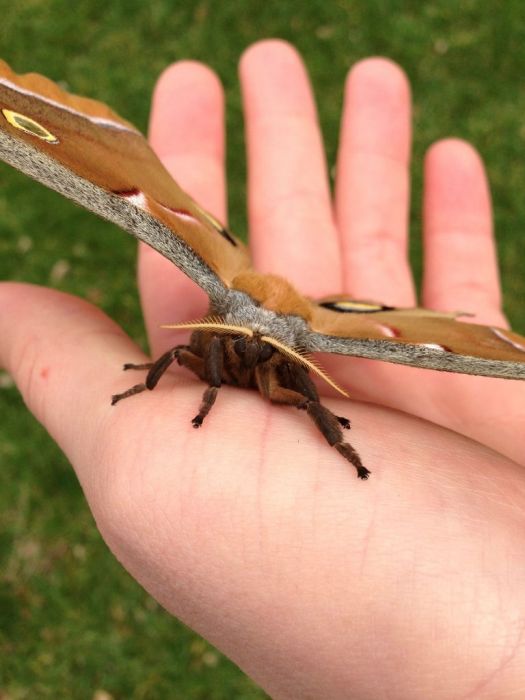|
|
Transformation Of Antheraea Polyphemus Moth
|
Sexual dimorphism
Differentiating between sexes of this species is very easy. The most obvious difference is the plumose antennae. Males will have very bushy antennae while females will have moderately less bushy antennae. The male's bushy antennae are used to detect pheromones released by unmated females. Another difference is that the females will be slightly larger in the abdomen due to carrying eggs. There is a surprising amount of variation within this species. Color patterns can range from a reddish-cinnamon to a dark brown but are almost always a shade of brown. In the late 1950s, amateur lepidopterist Gary Botting hybridized the Polyphemus moth (then known as Telea polyphemus) with Antheraea yamamai from Japan and, later, Antheraea mylitta from India by transferring the pheromone-producing scent sacs from female polyphemus to the Antheraea females and allowing polyphemus males to mate with them. The resultant hybrids were displayed in his winning U.S. National Science Fair exhibit "Intergeneric hybridization among giant silk moths." After Botting consulted with genetic statistician J.B.S. Haldane and his wife, entomologist Helen Spurway, the polyphemus moth was reclassified, becoming Antheraea polyphemus.
|
|









